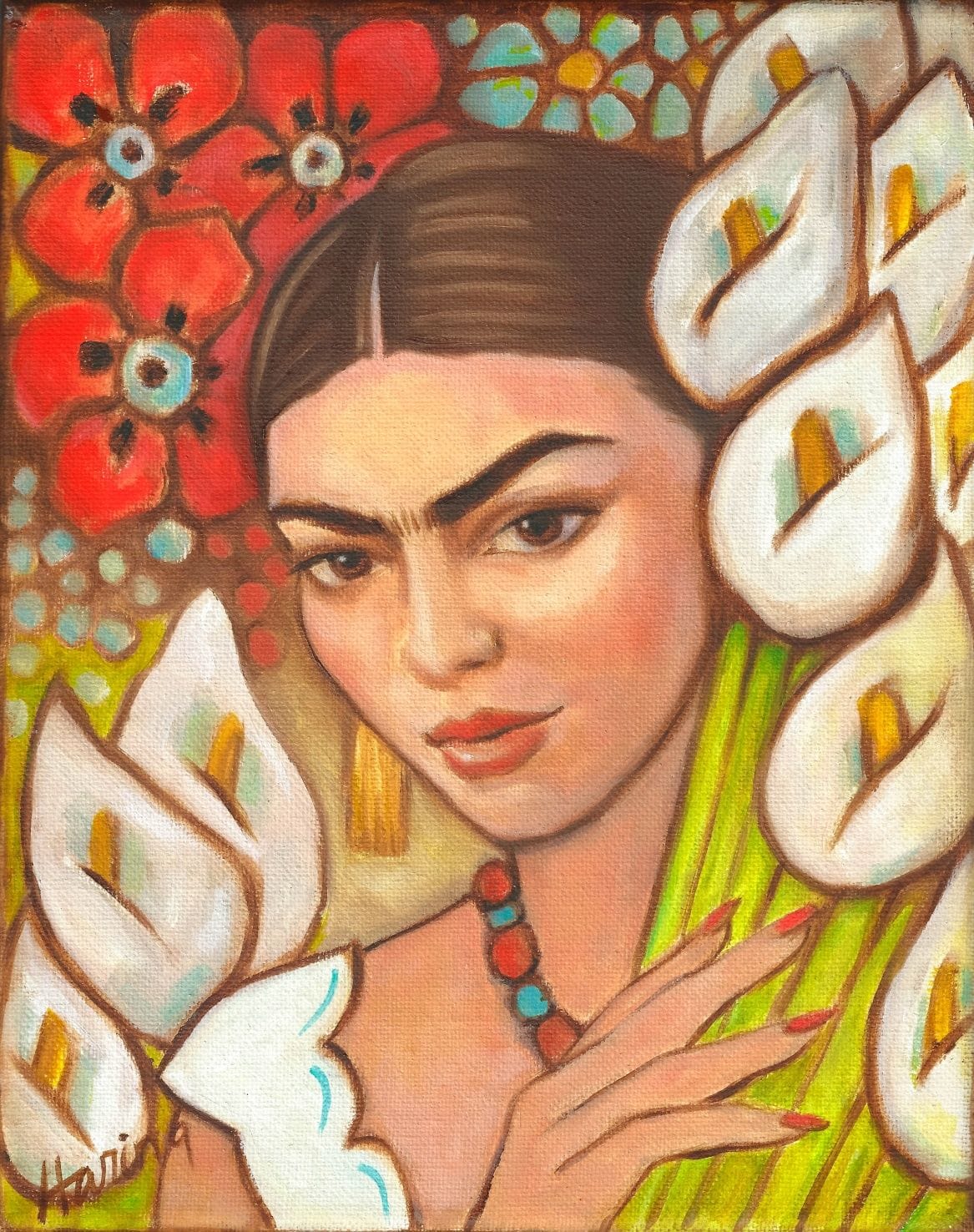Decoding Frida’s Visual Diary of Loss
Frida Kahlo’s Henry Ford Hospital (1932) isn’t just a painting; it’s a visceral portrait of physical and emotional suffering following her miscarriage in Detroit. This powerful artwork, currently housed at the Dolores Olmedo Museum in Mexico City, captivates with its unflinching portrayal of pain, but also whispers a tale of resilience and the indomitable spirit that can blossom amidst adversity. Painted on metal, likely provided by her husband Diego Rivera, the piece goes beyond the typical polished portraits of the time, presenting Kahlo’s experience with stark realism interwoven with surrealist elements.
A Symphony of Suffering and Symbolism
The painting depicts Kahlo lying nude on a hospital bed, her body vulnerable and exposed. This vulnerability immediately draws the viewer in, hinting at the emotional nakedness she’s also presenting. Her face, contorted with a mix of pain and resignation, is streaked with tears. Six red, almost umbilical-like cords tether her to six symbolic objects floating around her, each representing a facet of her physical and emotional turmoil:
- Male Fetus: Likely representing the lost child, a poignant symbol of shattered hopes and dreams of motherhood.
- Snail: The snail’s slow pace probably symbolizes the agonizingly slow passage of time during recovery and the agonizingly slow healing process. Some scholars suggest the snail, meticulously rendered on the tin canvas, might also symbolize resilience and artistic rebirth amid trauma.
- Machine: Possibly referencing the cold, impersonal nature of the hospital environment, emphasizing her isolation.
- Orchid: Traditionally a symbol of fertility and beauty, the wilting orchid may now represent loss and decay, or perhaps the fragile nature of life itself.
- Pelvic Bone: A stark reminder of the physical reality of her miscarriage and the female body’s role in reproduction and loss.
- Anatomical Model: Perhaps representing the medical procedures she endured, completing the unsettling tableau.
These floating objects, connected to Kahlo by crimson cords, create a sense of being trapped, tethered to her pain. They suggest the profound interconnectedness of her physical and emotional suffering. The barren, almost industrial landscape of the hospital bed further emphasizes this sense of isolation and vulnerability. It’s a cold, sterile environment that offers little comfort, highlighting the emotional rawness of the scene. Some experts believe this stark setting might also represent the emotional emptiness Kahlo felt after her miscarriage, particularly as she was far from her native Mexico, in the industrialized setting of Detroit.
A Defiant Act of Self-Expression
Kahlo’s decision to depict herself nude in this setting is significant. It goes against traditional portrayals of women, particularly in the context of suffering. She’s not idealized or romanticized; she’s presented in all her raw, human fragility. This bold choice reinforces the painting’s message of vulnerability and the rawness of her experience. It’s a defiant act, refusing to shy away from the messy reality of female pain and challenging societal taboos surrounding miscarriage, a topic rarely discussed openly, especially in art at that time.
The Deeper Meaning of Henry Ford Hospital
Henry Ford Hospital offers a poignant glimpse into Kahlo’s personal experience, yet it resonates with a universal audience, touching upon shared experiences of loss, grief, and the arduous path towards healing. The painting may also reflect broader themes of alienation and displacement, especially considering Kahlo’s Mexican heritage and her experience in a foreign country while enduring such a traumatic event.
The painting’s meaning continues to be a subject of ongoing research and discussion. Some scholars see connections to Mexican Muralism, with its focus on human suffering. Others suggest the painting explores Frida’s complex relationship with her own body, a recurring theme in her work, particularly given her lifelong health challenges. Examining her other works, such as The Broken Column or My Birth, can offer further insight into her unique perspective and recurring motifs. For Whom the Bell Tolls, a novel by Ernest Hemingway, also explores themes of loss and resilience, albeit in a different context.
While the precise symbolism of each element remains open to interpretation, the painting’s emotional power is undeniable. Henry Ford Hospital stands as a testament to Kahlo’s artistic transformation of personal pain into a shared human experience, offering solace, recognition, and a nuanced understanding of the complexities of grief.
Locating Kahlo’s Masterpiece: Henry Ford Hospital‘s Home
While the title might lead one to believe the painting resides in Detroit, Henry Ford Hospital is actually located at the Dolores Olmedo Museum in Mexico City. The title refers to the location of Kahlo’s tragic miscarriage while visiting with her husband, Diego Rivera, and serves as a stark reminder of the event that inspired this powerful work. Though painted in Detroit during this traumatic period, the artwork ultimately found its home in Mexico, symbolically reconnecting Kahlo with her roots and cultural identity. The painting’s journey from Detroit to Mexico City could be seen as a symbolic return, bringing this deeply personal expression of pain back to her homeland.
Deciphering the Snail’s Significance in Henry Ford Hospital
The snail in Henry Ford Hospital is more than just a small detail; it’s a potent symbol that adds a layer of complexity to the painting’s emotional landscape. Considering Kahlo’s physical and emotional state after her miscarriage, the snail’s slow, deliberate movement likely represents the agonizing crawl of time during her recovery. This slowness stands in stark contrast to the bustling efficiency of a modern hospital like Henry Ford, which might itself symbolize the dehumanizing aspects of medical intervention.
The snail’s delicate shell probably represents vulnerability, mirroring Kahlo’s own fragile state after her miscarriage. Furthermore, the snail’s presence on the tin canvas, an unconventional material that Kahlo might have started using due to Rivera’s encouragement, can also be viewed as a symbol of resilience—a testament to her ability to transform pain into art, even amidst trauma. This act of creation on a challenging new medium becomes a form of artistic rebirth.
The snail is also connected to other symbolic objects by the umbilical cords, reinforcing the interconnectedness of Kahlo’s physical and emotional pain. Just as Dante’s Inferno begins with “Nel,” setting the tone for a dark journey, the snail in Henry Ford Hospital sets a similar tone of slow, agonizing suffering. While interpretations of the snail can vary, its presence undoubtedly enriches the narrative of pain, resilience, and the complex female experience that Kahlo so powerfully conveys in this masterpiece.
















